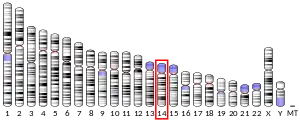| GPX2 | |||||||||||||||||||||||||||||||||||||||||||||||||||
|---|---|---|---|---|---|---|---|---|---|---|---|---|---|---|---|---|---|---|---|---|---|---|---|---|---|---|---|---|---|---|---|---|---|---|---|---|---|---|---|---|---|---|---|---|---|---|---|---|---|---|---|
 | |||||||||||||||||||||||||||||||||||||||||||||||||||
| |||||||||||||||||||||||||||||||||||||||||||||||||||
| Identifiers | |||||||||||||||||||||||||||||||||||||||||||||||||||
| Aliases | GPX2, GI-GPx, GPRP, GPRP-2, GPx-2, GPx-GI, GSHPX-GI, GSHPx-2, glutathione peroxidase 2 | ||||||||||||||||||||||||||||||||||||||||||||||||||
| External IDs | OMIM: 138319 MGI: 106609 HomoloGene: 20479 GeneCards: GPX2 | ||||||||||||||||||||||||||||||||||||||||||||||||||
| |||||||||||||||||||||||||||||||||||||||||||||||||||
| |||||||||||||||||||||||||||||||||||||||||||||||||||
| |||||||||||||||||||||||||||||||||||||||||||||||||||
| |||||||||||||||||||||||||||||||||||||||||||||||||||
| |||||||||||||||||||||||||||||||||||||||||||||||||||
| Wikidata | |||||||||||||||||||||||||||||||||||||||||||||||||||
| |||||||||||||||||||||||||||||||||||||||||||||||||||
Glutathione peroxidase 2 is an enzyme that in humans is encoded by the GPX2 gene.[5][6][7]
This gene is a member of the glutathione peroxidase family encoding a selenium-dependent glutathione peroxidase that is one of two isoenzymes responsible for the majority of the glutathione-dependent hydrogen peroxide-reducing activity in the epithelium of the gastrointestinal tract. Studies in knockout mice indicate that mRNA expression levels respond to luminal microflora, suggesting a role of the ileal glutathione peroxidases in preventing inflammation in the GI tract.[7]
The antioxidant enzyme glutathione peroxidase 2 (Gpx2) is one out of eight known glutathione peroxidases (Gpx1-8) in humans. Mammalian Gpx1, GPx2 (this protein), Gpx3, and Gpx4 have been shown to be selenium-containing enzymes, whereas Gpx6 is a selenoprotein in humans with cysteine-containing homologues in rodents. In selenoproteins, the 21st amino acid selenocysteine is inserted in the nascent polypeptide chain during the process of translational recoding of the UGA stop codon.
References
- 1 2 3 GRCh38: Ensembl release 89: ENSG00000176153 - Ensembl, May 2017
- 1 2 3 GRCm38: Ensembl release 89: ENSMUSG00000042808 - Ensembl, May 2017
- ↑ "Human PubMed Reference:". National Center for Biotechnology Information, U.S. National Library of Medicine.
- ↑ "Mouse PubMed Reference:". National Center for Biotechnology Information, U.S. National Library of Medicine.
- ↑ Chu FF, Doroshow JH, Esworthy RS (Mar 1993). "Expression, characterization, and tissue distribution of a new cellular selenium-dependent glutathione peroxidase, GSHPx-GI". J Biol Chem. 268 (4): 2571–6. doi:10.1016/S0021-9258(18)53812-6. PMID 8428933.
- ↑ Chu FF (Feb 1994). "The human glutathione peroxidase genes GPX2, GPX3, and GPX4 map to chromosomes 14, 5, and 19, respectively". Cytogenet Cell Genet. 66 (2): 96–8. doi:10.1159/000133675. PMID 8287691.
- 1 2 "Entrez Gene: GPX2 glutathione peroxidase 2 (gastrointestinal)".
Further reading
- Akasaka M, Mizoguchi J, Takahashi K (1990). "A human cDNA sequence of a novel glutathione peroxidase-related protein". Nucleic Acids Res. 18 (15): 4619. doi:10.1093/nar/18.15.4619. PMC 331311. PMID 2388849.
- Maruyama K, Sugano S (1994). "Oligo-capping: a simple method to replace the cap structure of eukaryotic mRNAs with oligoribonucleotides". Gene. 138 (1–2): 171–4. doi:10.1016/0378-1119(94)90802-8. PMID 8125298.
- Chu FF, Rohan de Silva HA, Esworthy RS, et al. (1997). "Polymorphism and chromosomal localization of the GI-form of human glutathione peroxidase (GPX2) on 14q24.1 by in situ hybridization". Genomics. 32 (2): 272–6. doi:10.1006/geno.1996.0115. PMID 8833155.
- Suzuki Y, Yoshitomo-Nakagawa K, Maruyama K, et al. (1997). "Construction and characterization of a full length-enriched and a 5'-end-enriched cDNA library". Gene. 200 (1–2): 149–56. doi:10.1016/S0378-1119(97)00411-3. PMID 9373149.
- Opalenik SR, Ding Q, Mallery SR, Thompson JA (1998). "Glutathione depletion associated with the HIV-1 TAT protein mediates the extracellular appearance of acidic fibroblast growth factor". Arch. Biochem. Biophys. 351 (1): 17–26. doi:10.1006/abbi.1997.0566. PMID 9501919.
- Choi J, Liu RM, Kundu RK, et al. (2000). "Molecular mechanism of decreased glutathione content in human immunodeficiency virus type 1 Tat-transgenic mice". J. Biol. Chem. 275 (5): 3693–8. doi:10.1074/jbc.275.5.3693. PMID 10652368.
- Kelner MJ, Bagnell RD, Montoya MA, Lanham KA (2000). "Structural organization of the human gastrointestinal glutathione peroxidase (GPX2) promoter and 3'-nontranscribed region: transcriptional response to exogenous redox agents". Gene. 248 (1–2): 109–16. doi:10.1016/S0378-1119(00)00137-2. PMID 10806356.
- Richard MJ, Guiraud P, Didier C, et al. (2001). "Human immunodeficiency virus type 1 Tat protein impairs selenoglutathione peroxidase expression and activity by a mechanism independent of cellular selenium uptake: consequences on cellular resistance to UV-A radiation". Arch. Biochem. Biophys. 386 (2): 213–20. doi:10.1006/abbi.2000.2197. PMID 11368344.
- Komatsu H, Okayasu I, Mitomi H, et al. (2001). "Immunohistochemical detection of human gastrointestinal glutathione peroxidase in normal tissues and cultured cells with novel mouse monoclonal antibodies". J. Histochem. Cytochem. 49 (6): 759–66. doi:10.1177/002215540104900609. PMID 11373322.
- Florian S, Wingler K, Schmehl K, et al. (2002). "Cellular and subcellular localization of gastrointestinal glutathione peroxidase in normal and malignant human intestinal tissue". Free Radic. Res. 35 (6): 655–63. doi:10.1080/10715760100301181. PMID 11811519. S2CID 22845933.
- Strausberg RL, Feingold EA, Grouse LH, et al. (2003). "Generation and initial analysis of more than 15,000 full-length human and mouse cDNA sequences". Proc. Natl. Acad. Sci. U.S.A. 99 (26): 16899–903. Bibcode:2002PNAS...9916899M. doi:10.1073/pnas.242603899. PMC 139241. PMID 12477932.
- Müller C, Wingler K, Brigelius-Flohé R (2003). "3'UTRs of glutathione peroxidases differentially affect selenium-dependent mRNA stability and selenocysteine incorporation efficiency". Biol. Chem. 384 (1): 11–8. doi:10.1515/BC.2003.002. PMID 12674495. S2CID 24693834.
- Esworthy RS, Binder SW, Doroshow JH, Chu FF (2003). "Microflora trigger colitis in mice deficient in selenium-dependent glutathione peroxidase and induce Gpx2 gene expression". Biol. Chem. 384 (4): 597–607. doi:10.1515/BC.2003.067. PMID 12751789. S2CID 25131807.
- Gerhard DS, Wagner L, Feingold EA, et al. (2004). "The status, quality, and expansion of the NIH full-length cDNA project: the Mammalian Gene Collection (MGC)". Genome Res. 14 (10B): 2121–7. doi:10.1101/gr.2596504. PMC 528928. PMID 15489334.
- Price TO, Ercal N, Nakaoke R, Banks WA (2005). "HIV-1 viral proteins gp120 and Tat induce oxidative stress in brain endothelial cells". Brain Res. 1045 (1–2): 57–63. doi:10.1016/j.brainres.2005.03.031. PMID 15910762. S2CID 7362454.
- Banning A, Deubel S, Kluth D, et al. (2005). "The GI-GPx gene is a target for Nrf2". Mol. Cell. Biol. 25 (12): 4914–23. doi:10.1128/MCB.25.12.4914-4923.2005. PMC 1140597. PMID 15923610.
- Yan W, Chen X (2006). "GPX2, a direct target of p63, inhibits oxidative stress-induced apoptosis in a p53-dependent manner". J. Biol. Chem. 281 (12): 7856–62. doi:10.1074/jbc.M512655200. PMID 16446369.
- Singh A, Rangasamy T, Thimmulappa RK, et al. (2007). "Glutathione peroxidase 2, the major cigarette smoke-inducible isoform of GPX in lungs, is regulated by Nrf2". Am. J. Respir. Cell Mol. Biol. 35 (6): 639–50. doi:10.1165/rcmb.2005-0325OC. PMC 2643293. PMID 16794261.





